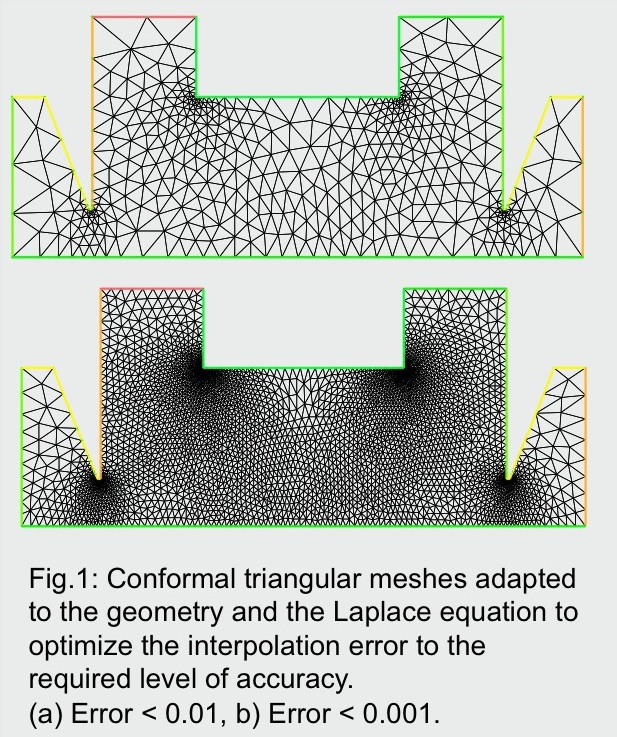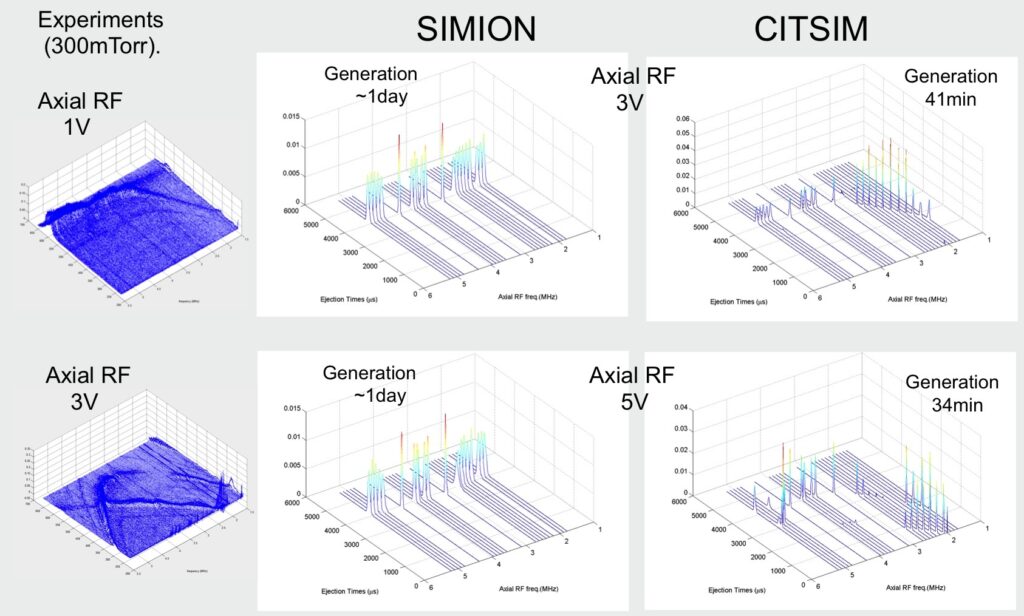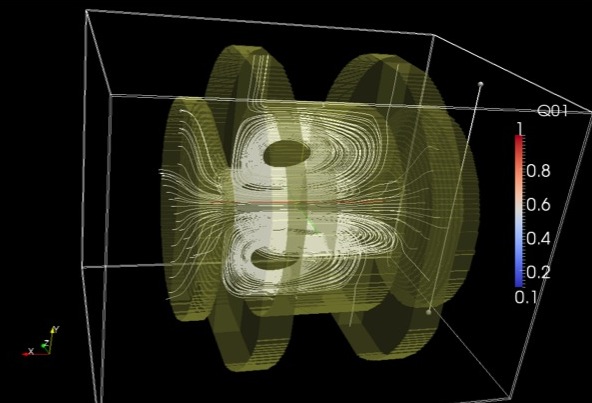Computer Simulations
We are working on developing a package of programs, Collisional Ion Trap Simulator (CITSIM) that treats collisions realistically in the domain of pressure at which our ion traps are operated (0.1 < P < 10 Torr). CITSIM computes ion trajectories for both non-equilibrium and local equilibrium background gas conditions using a combination of Python scripting, Fortran CPU code, and CUDA GPU code.
Methods
- An ion trajectory computational framework has been implemented that incorporates special purpose routines with public domain software through Python language scripts.
- The electrostatic fields for arbitrary 2D, 3D geometries are computed by standard Galerkin formulations of the weak form of the Laplace equation.
- Ion-ion electrostatic forces are computed as all-pair interactions for few ions (e.g. less than 1000) or hierarchical tree-summations for many ions.
- Fluid flow is computed by numerical solution of the compressible Euler equations at high pressures and local equilibrium conditions.
- A GPU-implemented lattice Boltzmann method determines non-equilibrated buffer gas molecular velocity distributions.
- Rarefied gas flow (Knudsen number Kn > 0:01) is computed by a high-performance, GPU implementation of the lattice Boltzmann method in three dimensions. Both single-speed and multiple speed lattice methods are supported).
- Symplectic integrators (e.g. Verlet algorithm) are used to compute ion trajectories.

Areas of interest for simulations
- Mass spectra generation and analysis
- Geometry Parametrer Optimizations
- Trapping Efficiency, Trap performance
- Short time Fourier transform analysis of ion trajectories
Helium 500 mTorr axial RF scans at different RF voltages

A comparison is made using the same hard sphere collisions model in SIMION and CITSIM (HS1). CITSIM shows an improved sensitivity to axial voltage in compliance with the experimental results due to improved field calculation accuracy . CITSIM uses the Verlet algorithm instead of Runge-Kutta algorithm for the trajectory calculations, which makes it about 20 times faster than SIMION: 1 scan = 23 spectra × 400 ions= 9200 ions were flown taking less than 45 min with CITSIM compared to one day with SIMION (128amu Xe+, collision cross section in helium σ2=7.2382e-19m2). Early ejection peaks are due to asymmetric axial RF application to one endcap.
Simulated gas flow in a miniature ion trap
For Knudsen number (Kn) > 0.1, macroscopic quantities such as pressure, mass density are not well defined. Gas dynamics are more realistically rendered by the Lattice Boltzmann equation (LBM) which describes the gases in terms of their fundamental constituents.

This figure shows a CITSIM simulation of the flow of buffer gas when a differential pressure is maintained between the interior of the ion trap and the exiting endcap. Time series of the flow are pre-calculated, and used to determine the probability of collisions during the ions flights.
